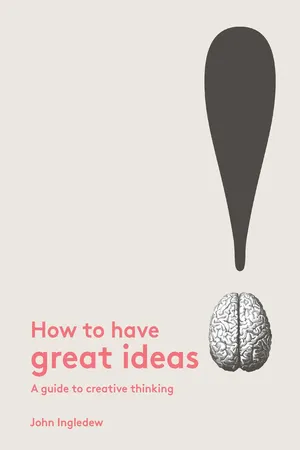
This is a test
- English
- PDF
- Available on iOS & Android
eBook - PDF
Book details
Book preview
Table of contents
Citations
Frequently asked questions
At the moment all of our mobile-responsive ePub books are available to download via the app. Most of our PDFs are also available to download and we're working on making the final remaining ones downloadable now. Learn more here.
Both plans give you full access to the library and all of Perlego’s features. The only differences are the price and subscription period: With the annual plan you’ll save around 30% compared to 12 months on the monthly plan.
We are an online textbook subscription service, where you can get access to an entire online library for less than the price of a single book per month. With over 1 million books across 1000+ topics, we’ve got you covered! Learn more here.
Look out for the read-aloud symbol on your next book to see if you can listen to it. The read-aloud tool reads text aloud for you, highlighting the text as it is being read. You can pause it, speed it up and slow it down. Learn more here.
Yes, you can access How to Have Great Ideas by John Ingledew in PDF and/or ePUB format, as well as other popular books in Diseño & Diseño general. We have over one million books available in our catalogue for you to explore.
Information
Topic
DiseñoSubtopic
Diseño general
184
Hats
off
to
Jo
Lightfoot,
Sarah
Batten
and
Laurence
King,
who
helped
to
shape
this
book,
Gaynor
Sermon
who
edited
it,
Peter
Kent
for
his
excellence
in
helping
to
gather
the
pictures
and
Charlie
Smith
for
the
design.
Thanks
to
students
in
Shanghai,
Suzhou,
Dalian,
London
and
Gloucestershire
for
trying
out
the
projects.
Many
thanks
are
also
due
to
the
following
people
for
their
invaluable
contribution
to
this
book:
Chris
J
Bailey,
Dan
Knight,
Nina
Saunders,
Stan
Wilson-Copp,
Rod
Shaw,
Jack
Schulze,
Dominic
Wilcox,
David
Myerson,
Christine
Bailey,
Jerome
Bailey,
Elizabeth
Bailey,
Jack
Southern,
Mark
Unsworth,
Nick
Pride,
Jen
Whiskerd,
Stuart
Wilding,
Tim
Adams,
Trudie
Ballantyne,
Sharon
Harper,
Kieren
Phelps,
Piers
Wall,
Ruth
Edge,
Johnnie
Shand
Kydd,
Jack
Wimperis,
Paul
Grellier,
Harley
Grellier,
Sarah
Jackson,
Paul
Jackson,
James
Kriszyk,
Jonathan
Garnett,
Chi
Kwan,
Tom
Mitchell,
Leah
Duery,
Heather
Gromley,
Charlotte
Brooks,
Lucy
Blowing,
Charlie
Beeson,
Nicola
Summerville,
Lisa
Lavery,
Jenny
Yevgeniya
Kuznetsova,
Sirius
Choi,
Farida
Sobhi,
Bright
Matithep
Subsakul
,
Dan
Glaister,
Ali
Glaister,
Bashy
Glaister,
Stanley
Glaister,
Nathan
Glaister
Garcia,
Maddy
Guinness,
James
Moores,
Dan
Chadwick,
David
Fitzsimons,
James
Reed,
Taba
Reed,
Patrick
Reed,
Aidan
Reed,
Harry
Reed,
Tessa
Reed,
Rosie
Reed,
Ben
Hough,
Pavlos
Kyriacou,
Jimmy
Turrell,
Dick
Jewell,
ClÈon
Daniel,
Louis
Jones,
Amanda
Jones,
Jo
Leahy,
Neil
Walker,
Aya
Abou-Taha,
Gela
Jenssen,
Jenny
Robinson,
Jingyang
Lin,
Jackie
Yang
Fan,
Johnny
Firewater
and
Dusty
Baxter-Wright.
Thanks
also
to
the
following
supporters,
collaborators,
consigliere
and
inspirations:
John
Brewer,
Nigel
Langford,
Kevin
Jones
ñ
CFC
and
bar,
Blaise
Douglas,
Kate
Vincent-Smith
and
Red
Saunders.
Dedicaton:
For
Mo,
Sarah
and
Umar.
p
g
a
t
p
Acknowledgements
Table of contents
- Introduction: What's the big idea?
- Exercise your imagination
- Be playful
- Write your manifesto
- Question, question, question
- Keep it simple
- Just get started
- Value first ideas
- Voice your wildest concept
- Act like a kid
- Take notice
- Visualize it
- Get help
- Know who's the daddy
- What would Terry do?
- Ask 'What else can I do with this?'
- Find your inner genius
- Make 'em laugh
- Reposition
- Hoard
- Find a link
- Make leaping jumps
- Fail towards success
- Find an analogy
- Change what appears to be fixed
- Fix your frustrations
- Look to nature
- Change the room
- Build your own space
- Try osmosis
- Change the scenery
- Improvise
- Go to the factory
- Trust your hunches
- Potter, ponder and tinker
- Try translating
- Sleep on it
- Take a break
- Spend time daydreaming
- Embrace absurdity
- Take a chance
- Fence yourself in
- Try swapping systems
- Try combining systems
- Be a storyteller
- Appreciate accidents
- Talk your way in
- Criss-cross borders
- Take things literally
- Be contrary
- Make it personal
- Understand your process
- Just in time
- Practise, practise, practise
- Index
- Credits and acknowledgements